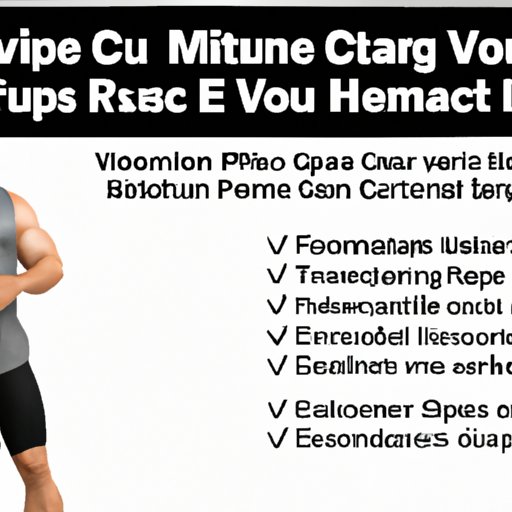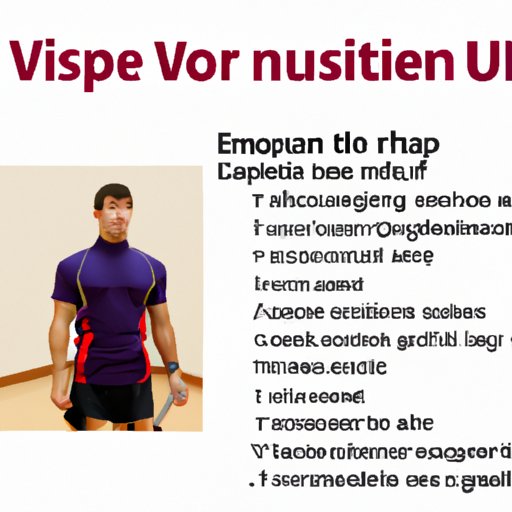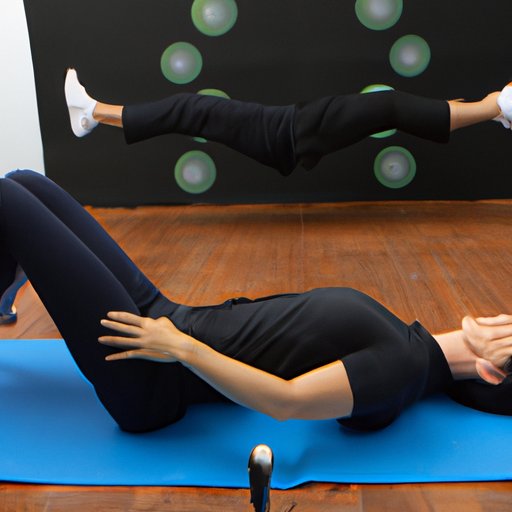Introduction
Vacuum exercise is an exercise designed to strengthen the core muscles in your abdomen. It involves taking a deep breath and then exhaling while pulling the abdominal muscles inward. This exercise can be done in a variety of ways, but the most common form involves lying on your back and using your hands to help you pull in your stomach. The benefits of vacuum exercise are numerous and include improved posture, increased abdominal strength, and improved balance.
How to Perform Vacuum Exercise Step-by-Step
Performing vacuum exercise correctly is essential for achieving maximum benefit from the exercise. Here is a step-by-step guide to help you properly execute the exercise:
Preparing Your Body
Before beginning the exercise, it is important to prepare your body for the task at hand. First, you should lie flat on your back with your knees bent and your feet flat on the floor. Place your hands on your lower abdomen and relax your body. Make sure your spine is in a neutral position and that your neck is relaxed.
Executing the Exercise
Once your body is prepared, take a deep breath in through your nose and hold it for a few seconds. As you exhale, use your hands to help you pull your stomach in as far as you can. Hold this position for 10-15 seconds before releasing. Repeat this process 8-10 times.
Finishing the Exercise
After completing the exercise, it is important to finish by allowing your body to rest. Take a few deep breaths and relax your body. You may also want to stretch your abdominal muscles to help them recover from the exercise.

Tips on Improving Vacuum Exercise Performance
Here are some tips to help you get the most out of your vacuum exercise routine:
Proper Breathing Techniques
Focus on breathing in through your nose and exhaling through your mouth. This will ensure that your lungs are getting enough oxygen during the exercise and that you’re not holding your breath too long. Additionally, make sure to breathe deeply so that your abdominal muscles are properly engaged.
Increasing Intensity Over Time
As you become more comfortable with the exercise, gradually increase the intensity. For example, you can try holding your breath longer or pulling your stomach in further. This will help to challenge your muscles and increase the effectiveness of the exercise.
Strengthening Core Muscles
It is important to strengthen the core muscles in order to maximize the benefits of vacuum exercise. Incorporate exercises such as planks, crunches, and leg lifts into your routine to strengthen these muscles. This will help improve your overall performance and help you achieve better results.

Common Mistakes in Performing Vacuum Exercise
When performing vacuum exercise, it is important to be aware of some common mistakes that can reduce the effectiveness of the exercise. Here are some mistakes to avoid:
Not Engaging the Core Muscles
If you don’t engage your core muscles when performing the exercise, you won’t reap the full benefits. Make sure you are pulling your stomach in as far as you can and that your abdominal muscles remain tight throughout the exercise.
Exhaling During the Exercise
Holding your breath is essential for proper execution of the exercise. If you exhale during the exercise, it will reduce the effectiveness and you won’t get the full benefit. Be sure to take a deep breath in and then hold it before pulling your stomach in.
Not Focusing on Proper Form
It is important to focus on proper form throughout the exercise. You should be lying flat on your back with your spine in a neutral position. Additionally, make sure to keep your neck relaxed and your hands on your lower abdomen to help you pull in your stomach.
Variations of Vacuum Exercise
There are two main variations of vacuum exercise: isometric and dynamic. Isometric vacuum exercise involves holding the contraction without any movement while dynamic vacuum exercise involves actively engaging the core muscles while moving the arms and legs.
Appropriate Frequency and Intensity for Vacuum Exercise
The frequency and intensity of vacuum exercise depends on your individual fitness level and goals. Generally speaking, it is best to perform the exercise 2-3 times per week with a moderate intensity. Beginners should start with shorter holds (5-10 seconds) and gradually increase the intensity over time.
Conclusion
Vacuum exercise is an effective way to strengthen the core muscles in your abdomen. When performed correctly, it can provide numerous benefits including improved posture, increased abdominal strength, and improved balance. When performing the exercise, it is important to focus on proper form and breathing technique. Additionally, there are variations of the exercise and it is important to find the right frequency and intensity for your individual fitness level. With dedication and practice, you can reap the full benefits of vacuum exercise.
(Note: Is this article not meeting your expectations? Do you have knowledge or insights to share? Unlock new opportunities and expand your reach by joining our authors team. Click Registration to join us and share your expertise with our readers.)
